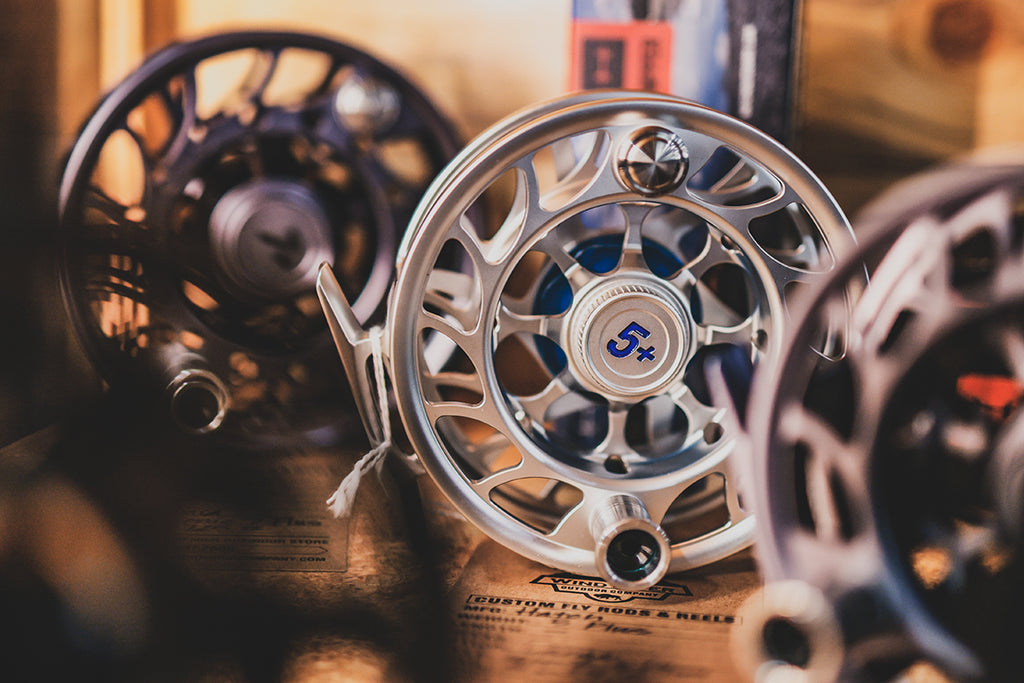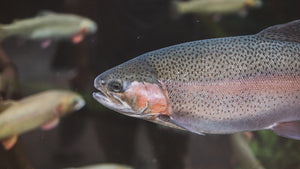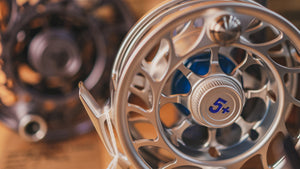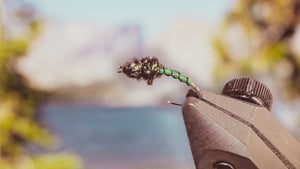WROC Gear Review — Fishing

Temps and Trout – A Key to Fish Survival 0
Writing about fish dying is not a subject I like; however, it is one that is going to be a big issue as this summer goes on. We all know it is hot, dry, and that water is in short supply all across the West. These conditions spell a coming disaster for all our wildlife and habitats but really pose a great danger for our trout fisheries. Simply stated, Trout require cold water to thrive and as this hot summer goes on, the water temps will increase – that is not a new discovery but one that we need to be aware of to prevent fish die off events.
The point of this blog is to make anglers aware of the dangers that rising water temps pose to trout and grayling and how the actions of angling may increase the rate of mortality of the fish we so love. The issue is that warm water has less ability to hold oxygen than that of cold water and the result is that Trout will begin to experience stress the higher the water temps climb. Just think of how we respond when we go out in 100-degree days – the trout experience the same level of stress. Generally speaking, trout do not survive in waters greater than 75 degrees. Furthermore, trout begin to struggle to obtain oxygen, process bodily functions and cope with the stresses of being caught in water greater than 68 degrees.
Why does this matter? When Trout are caught, they expend a great deal of energy “fighting” and they become stressed. Under water condition where the water temps are less than 65 degrees then the fish is able to process more oxygen out of the water and they are able to handle/process the stress much better. However, when those water temperatures climb over 65 degrees then that ability becomes much less and as a result, there is a drastically higher mortality rate from catch and release angling. For this reason, it is highly recommended that all fishing ceases in water temperatures that are in excess of 65 degrees unless you plan on keeping your catch.
There are many areas across the West – particularly Montana - that institute rules that are referred to as “Hoot Owl” restrictions. Under this situation, fishing is prohibited generally from early afternoon until midnight so that fish have the ability to make it through the hottest part of each day without the additional stress of being caught and landed. Trout respond to these hot temps by finding the coolest part of streams and basically becoming almost dormant until the water temps come down to levels that allow for the bodily functions and most importantly, breathing, to becoming less stressful. Not all waters (or states) institute “hoot owl” restrictions but that does not mean that the angling community should not exercise restraint on our activities when the conditions are becoming detrimental to our beloved trout.
Taking all of this into consideration, unless you plan on keeping a few fish, it is advisable that when water temps climb above 65 degrees we should cease our fishing activities until such time as the water temps have reached safe limits for our quarry. Those hot days are the times to sit in the shade, sip on a cool beverage, even play golf or take a nap. We all value our fisheries but sometimes that means that we have to forego our love of angling so that we have a viable fishery in the future. Remember, a little bit of effort now will pay off in spades when our weather pattern gets back to an El Nino flow and we have more precipitation and cooler temperatures.
Remember, when water temps hit 65 or higher, it’s best to call it and day and put the rods away.
- Ron Hansen
- Tags: Fishing Fly Fishing Trout Weather Patterns

The All New Hatch Iconic Fly Fishing Reel 0
You probably remember beginning to feel the limitations of your first fly fishing combo. Maybe your reel's drag imploded on the first decent fish you tied into, maybe it was the hundredth. Maybe it still developed a squeak after being deformed by falling on your face, distracted by rising trout when you should have been looking at where you were putting your feet. Maybe you just had a sneaking suspicion that the reason you lost that BKC (Biggest Known Catch) was the garbage you were trying to break its run with.
So you saved your money, and searched out reviews, looking for the best gear you could find. All of a sudden, the money you put into getting into the next tier of gear got you things like machined aluminum billets, graphite fast action, carbon fiber disk drags, and burl wood inserts. And as you ramped up your gear, you spent less time thinking about the limitations of your kit, and more time focusing on being in the moment, connecting the dots.

I'll be the first to tell you, better gear won't make you a better fisherman... but it certainly won't stand in your way. Helping you define whether it's your gear or your skill set, let us herald the arrival of the new Iconic series from Hatch. Hatch Outdoors has been at the forefront of American Made fly fishing reels since 2003 when the limitations of inferior gear drove the founder to innovate. Never one to rest on their laurels, and building on the success of the much loved Finatic Series, Hatch has once again innovated and come out with a new line of lighter, better-designed mid and large arbor reel to handle anything the piscatorial world has to throw at it.
- Joe Lefevre - Fly Fishing Manager
Click HERE to Shop the Hatch Iconic

- Kyle Hessling
- Tags: Fishing Fly Fishing Outdoors

Springtime Means Caddis Time! 0
Green Caddis Larvae
Springtime is a special time of year for fly anglers. The ice is retreating, the days are getting longer and most importantly, the fish (and bugs) are starting the get active. Many of us in the West are often faced with a period of time, generally late Feb through early to mid April, where the waters are gin clear and very cold, however, the trout are starting to get active. It is in these cold waters that our first really important bug of the West calls home and that is the Green Caddis Pupa, or in scientific jargon - Rhyacophila.
The Green Caddis Pupa is a caseless Caddis that actively scurries around waters of the Western rivers. This species loves clean and cold waters of the Mountain West and is usually the first real “match the hatch” pattern that I go to because they are abundant and I have found that as the ice is coming off, the Trout key into them with purpose. The one common thing about this species is that they are almost always a bright green body (almost neon) with a dark colored head segment and it is this that makes them easily recognizable against other species.
I always have this pattern in my nymph arsenal from size 10 through size 18. These caddis generally range from size 12 to 14 but I have on occasion seen them up to size 8 and as small as 20, however, they tend to average in the 12-16 size range. I prefer to tie them on a curved-shank scud hook with either a brass or tungsten bead to keep them deep and along the bottom. These bugs are active this time of year so trout are used to seeing them but they are always along the bottom on the stream and as they float, they tend to curl up…..thus the use of the curved scud hook in tying patterns for them.
The pattern is very easy to tie and one can really crank out a bunch of them once you get going. I would encourage anyone tying these to put the beads on the hooks first in order to really crank up the production. Without further ramblings, here is the pattern and materials I use:
Hook: FIREHOLE STICKS #317 Size 14
Bead: FIREHOLE STONES - TUNGSTEN, PLATTED 3.0MM/Black Nickel
Thread: UNI 6/0 WAXED FLY TYING THREAD CHARTREUSE
Collar: HARELINE ICE DUB Peacock Black
Body: VEEVUS THREAD 6/0 FL GREEN
Ribbing: UTC ULTRA WIRE MEDIUM Black (only use wire on thread bodies)
Head Cement: HARELINE DUBBIN HARD AS HULL HEAD CEMENT
Epoxy:LOON UV CLEAR FLY FINISH THIN (thin)(thread body only)
Cure Light: LOON UV NANO CURING LIGHT
Don’t be afraid to play around with other materials either, however, the above is what I tie 90% of my Green Caddis Pupa with. Tight lines!
- Ron Hansen
- Tags: Fishing Fly Fishing Fly Tying Outdoors



